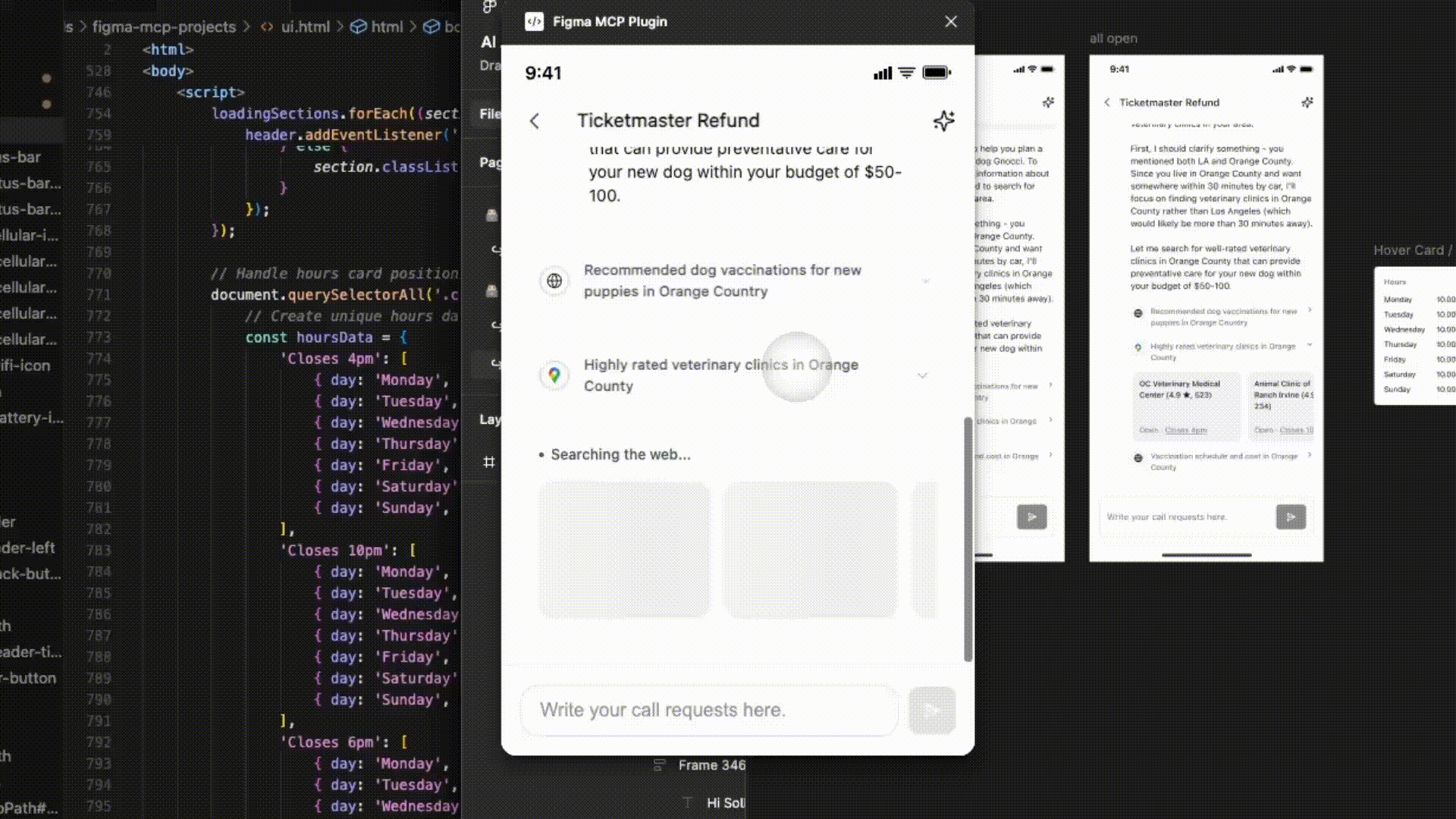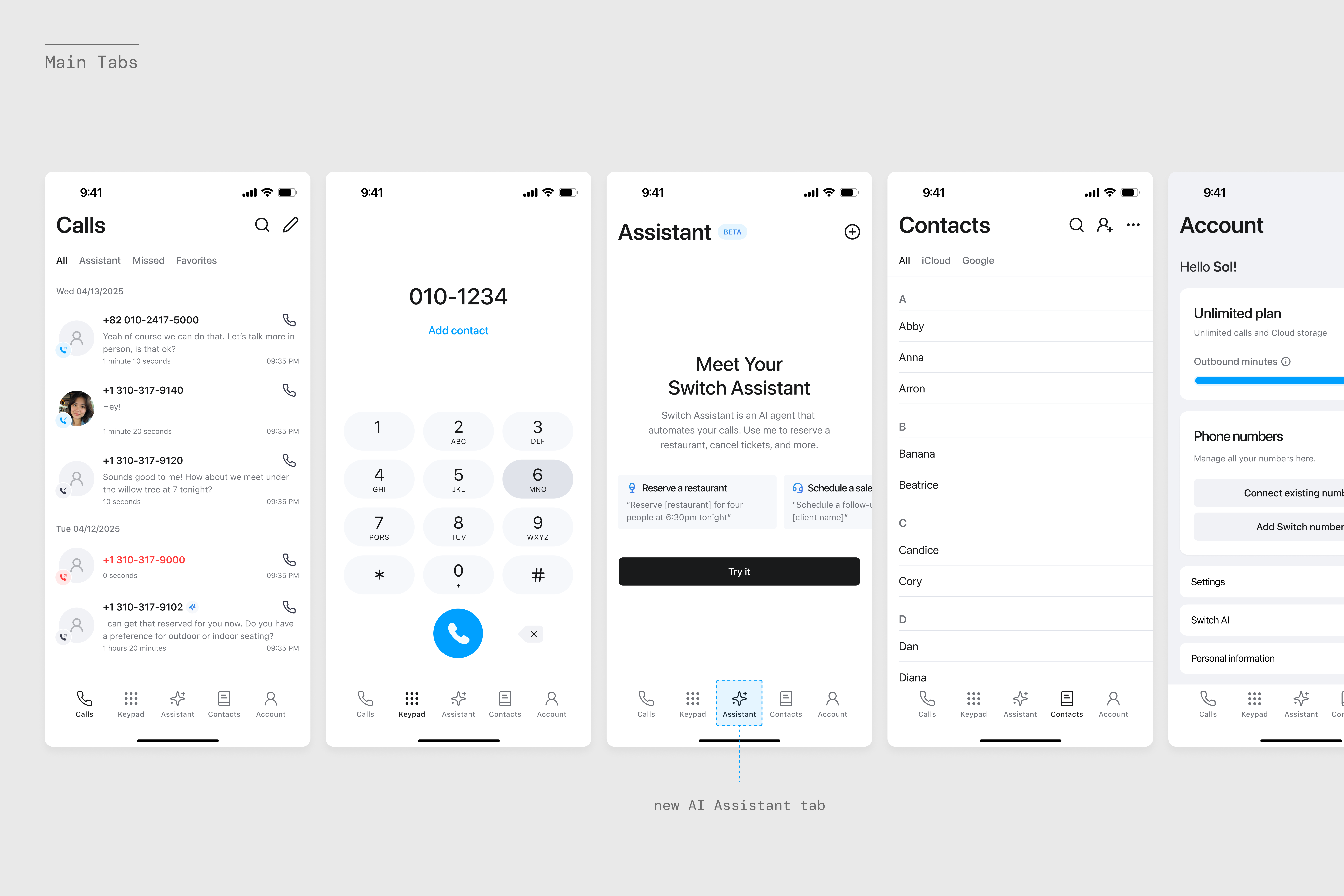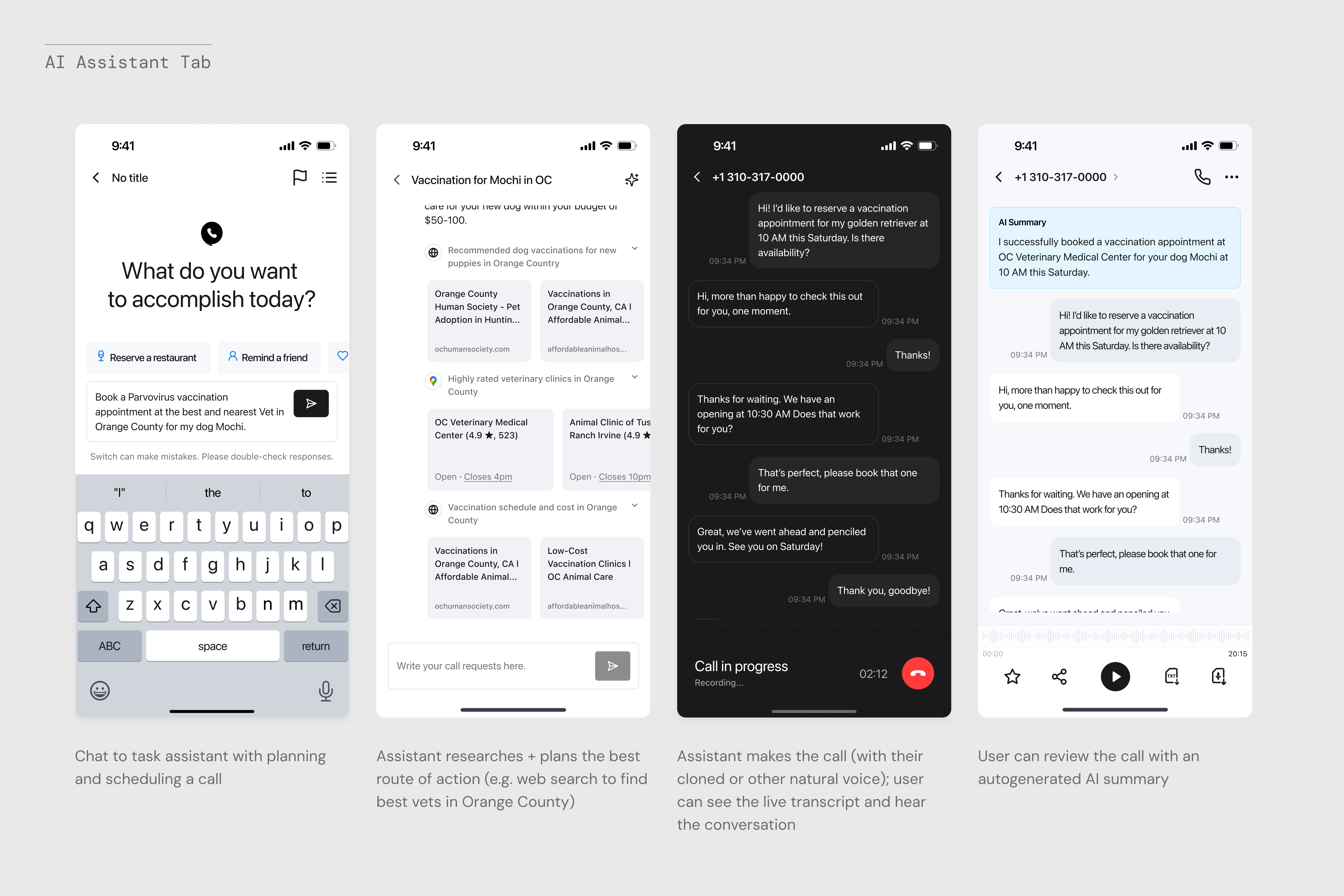Building Trust and Transparency in an AI Assisted Calling Experience
.png)
Switch built a call recording and live transcription app with more than one million users. In 2025 the company set a new goal: an AI powered assistant that could make phone calls and complete tasks for users, such as booking a restaurant or dealing with stressful admin.
I led product discovery, user research, and UX design for this new consumer AI calling experience. The real challenge was not just technical. It was about helping people feel safe when the AI is speaking for them. The heart of the work was designing for trust and transparency.
We began with a simple hypothesis. If people dislike making and receiving calls, they will happily let AI do it for them.
Our research revealed two main barriers:
- Users did not trust AI with sensitive or personal calls
- Delegation only made sense when the AI delivered real time savings
- New design problem: help the user feel confident and in control, and make delegation clearly worth it.
I designed a transparent calling experience that always shows what the AI is doing, why, and when the user can step in.
60% of support still happens over the phone. 65% of people avoid making calls. Only 14% trust AI to make them instead.
Sources: Zendesk, BankMyCell, PwC
Product Discovery
To test product value, I worked with marketing and CX on smoke test experiments. We ran paid ads and landing pages that asked people to join a waitlist. The broad value pitch did not convert well. People were not convinced the product would help them.
I then interviewed participants to uncover what would actually build confidence, which included:
- Proof that the AI can speak naturally
- Clear visibility into what is said
- Low risk first tasks
These patterns shaped our design principles.
Voice Usability Exploration
Users were worried a fake robotic sounding voice would prevent receivers from staying on the call. I worked with the AI research team to test voices from ElevenLabs, Orpheus, and Sesame. We decided on Sesame as it produced the most natural voice with realistic tone and pacing.
Users could:
- Choose from preset voices
- Clone their own voice for comfort and familiarity
Hearing the AI speak like them helped users feel more represented and confident.
.png)
Transparent UX and LLM Guardrails
I worked closely with engineering, CX, and the CEO as acting PM to define usability principles and LLM guardrails that kept the user in control and eliminated uncertainty.
Key flows included:
- Live transcript view to see the conversation between the AI and receiver
- Message prompt to correct the AI mid call
- Clear hang up button for control
- Post-call summaries that explained what happened and why
- A loading UI for Web Search that showed results were relevant to user's intent such as by location and highly-rated services (example below)
.png)
Behind the scenes: prototyping fast with Cursor
To speed up iteration, I used Cursor, shadcn components, and Figma MCP to move UI into working front end quickly. Engineers and I fine tuned behavior in real time.
One example was the Web Search flow. I created the UX in Figma, synced the design into Cursor, and refined code side by side until the interaction matched the intended experience with Figma MCP, then handed it off to the front-end developer.
This reduced design to development handoff from 2 weeks to 1-2 days and helped the team align on what was truly buildable.

The private beta delivered a transparent and globally compliant AI caller. Users could:
- Set up numbers in minutes via Twilio + eKYC in more than 180 countries, or connect their own number
- View transcripts and summaries in real time
- Let the AI plan and schedule calls based on intent
- Automatically retry calls if missed or failed
We also explored computer control for online bookings and cancellations, but placed it in the backlog until the technology is faster and more reliable.


- Led beta launch and reached more than 150 signups in the first 24 hours.
- Identified expats and immigrants with translation needs and those who were disputing health insurance claims as early adopters with high intent for AI assisted calls.
- Influenced product strategy toward trust, transparency, and clear value as primary adoption drivers.
- Trust is earned through visibility and control, not accuracy alone.
- AI delegation should start with low risk tasks that build confidence over time.
- That design is strategy. As the lead designer, I shaped product direction, messaging, and go to market strategy while delivering core product design.



